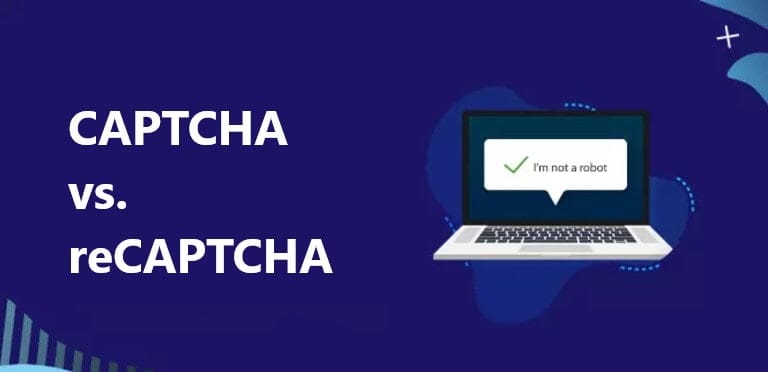The internet has transformed into a battleground between legitimate users and malicious bots.
As webmasters strive to protect their websites from spam, brute force attacks, and fake
accounts, CAPTCHA (Completely Automated Public Turing test to tell Computers and Humans
Apart) systems play a critical role in defending against these threats. But with evolving
technology, CAPTCHA systems themselves have had to adapt to keep bots at bay while
providing a seamless user experience.
In this blog, we’ll explore Google reCAPTCHA v3, the latest iteration of Google’s bot-fighting
technology, along with other CAPTCHA solutions in use today.
What is CAPTCHA?
A CAPTCHA is a challenge-response test used to determine if the user interacting with a
website is human or a bot. The goal is to design a challenge that is simple for humans to solve
but difficult for bots. CAPTCHAs are commonly used in forms, login pages, and other sections of
websites where bot activity could cause harm.
Introducing Google reCAPTCHA v3: The Invisible Guardian
Google reCAPTCHA has been a dominant player in the CAPTCHA space, evolving from basic
challenges to highly sophisticated systems. The latest version, Google reCAPTCHA v3,
focuses on enhancing user experience by running completely in the background.
How Does reCAPTCHA v3 Work?
Unlike its predecessors, reCAPTCHA v3 doesn’t ask users to solve puzzles or click checkboxes.
Instead, it evaluates user behavior in real time. It tracks actions such as mouse movements,
clicks, and how long a user spends on a page. Based on these patterns, it assigns a risk score
between 0.0 and 1.0, with higher scores indicating a human user and lower scores suggesting
the possibility of a bot.
Key Features of reCAPTCHA v3:
● No User Interaction: The best part about reCAPTCHA v3 is that it operates silently.
Users are never asked to solve a challenge unless the system detects suspicious
behavior.
● Score-Based System: Websites can set their own thresholds for the acceptable score.
For example, if a user’s score is below 0.3, additional verification like two-factor
authentication might be triggered.
● Custom Integration: The system is flexible enough to be integrated into various pages
and actions, from login screens to online payments, ensuring multi-layered protection.
Advantages:
● Seamless Experience: As no visible CAPTCHA is presented in most cases, users don’t
face any interruptions.
● Enhanced Security: The machine learning model behind reCAPTCHA v3 continuously
adapts to new threats, providing robust bot protection.
Concerns:
● Privacy Issues: reCAPTCHA v3 collects data on user interactions, which has led to
concerns about how much Google knows about individual browsing habits.
● Advanced Bot Challenges: Some highly sophisticated bots may still manage to pass
the test by mimicking human behavior.
Other Popular CAPTCHA Systems
While Google reCAPTCHA is a leader in the field, there are other CAPTCHA technologies
available that provide alternatives for website owners. Let’s explore some of these:
- Google reCAPTCHA v2: The Classic Interactive Test
Google reCAPTCHA v2 is the predecessor to v3 and requires users to actively engage with the
CAPTCHA. You might recognize it as the system that asks you to click a checkbox labeled, “I’m
not a robot,” or the one that prompts you to identify objects in a series of images, such as traffic
lights or crosswalks.
● Pros: More difficult for bots to bypass.
● Cons: Can be frustrating for users, especially when the CAPTCHA keeps reappearing
even after solving. - hCaptcha: A Privacy-Focused Alternative
For website owners concerned about privacy, hCaptcha offers a similar experience to
reCAPTCHA v2 but with fewer data collection concerns. hCaptcha also allows site owners to
earn rewards when users solve challenges, making it an appealing alternative.
● Pros: Strong bot protection with a focus on privacy.
● Cons: Similar to reCAPTCHA v2, it can create friction for users by requiring them to
solve visual puzzles.
- Geetest CAPTCHA: The Puzzle Master
Geetest provides an innovative CAPTCHA method that uses sliding puzzles instead of image
recognition or text input. Users complete a simple task like sliding a puzzle piece into place,
which is quick and intuitive.
● Pros: Easy to solve for humans and visually appealing.
● Cons: Less secure compared to more advanced bot-detection techniques. - Text-Based CAPTCHA: The Original Guardian
The original CAPTCHA method, Text-Based CAPTCHA, asks users to type a series of distorted
characters shown in an image. While still used on many sites, this method is becoming less
popular due to advances in optical character recognition (OCR) technology, which can allow
bots to solve these challenges easily.
● Pros: Simple to implement.
● Cons: Often frustrating for users and vulnerable to modern bots. - FunCaptcha: A Gamified Approach
FunCaptcha offers a more engaging CAPTCHA experience by using simple games, such as
rotating an image or solving a basic puzzle. This makes it more enjoyable for users, while still
blocking bots.
● Pros: A fun alternative to traditional CAPTCHAs.
● Cons: Slightly longer completion time for users compared to simpler methods.
Choosing the Right CAPTCHA for Your Website
When selecting a CAPTCHA system, several factors must be considered, including user
experience, security needs, and privacy concerns. Here are some important points to think
about:
● User Experience: If reducing friction is a priority, invisible CAPTCHAs like reCAPTCHA
v3 offer a near-seamless experience.
● Security Needs: Websites that are frequently targeted by bots may require more
stringent solutions like reCAPTCHA v2 or hCaptcha.
● Accessibility: Ensure the CAPTCHA you choose offers accessible alternatives, such as
audio CAPTCHAs, for users with disabilities.
● Data Privacy: If data collection is a concern, options like hCaptcha are worth exploring
for their more privacy-friendly policies.
Conclusion
CAPTCHAs have come a long way from the days of deciphering distorted text. With options like
Google reCAPTCHA v3, site owners can now protect their websites without sacrificing user
experience. However, other CAPTCHA solutions like hCaptcha and Geetest provide excellent
alternatives depending on your site’s security, privacy, and user needs.
As bots become more advanced, CAPTCHA technologies will continue to evolve. For now,
choosing the right CAPTCHA depends on balancing security with user experience, ensuring that
both your website and your users stay safe from unwanted bot traffic.
By using this structure, the blog covers various CAPTCHA technologies and provides an
in-depth look into Google reCAPTCHA v3, as well as other options. Feel free to modify it to fit
your writing style!





